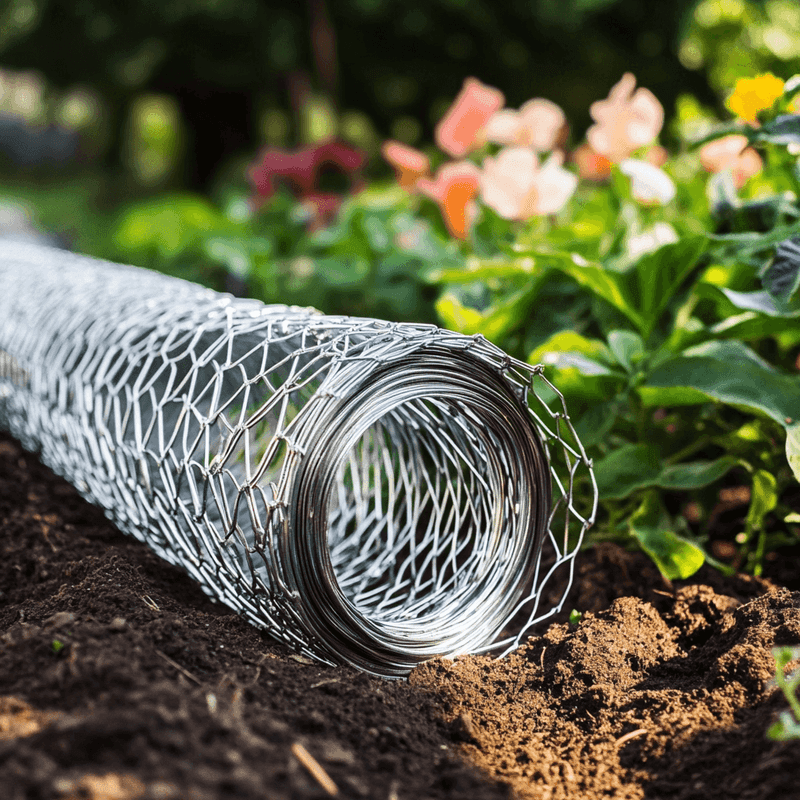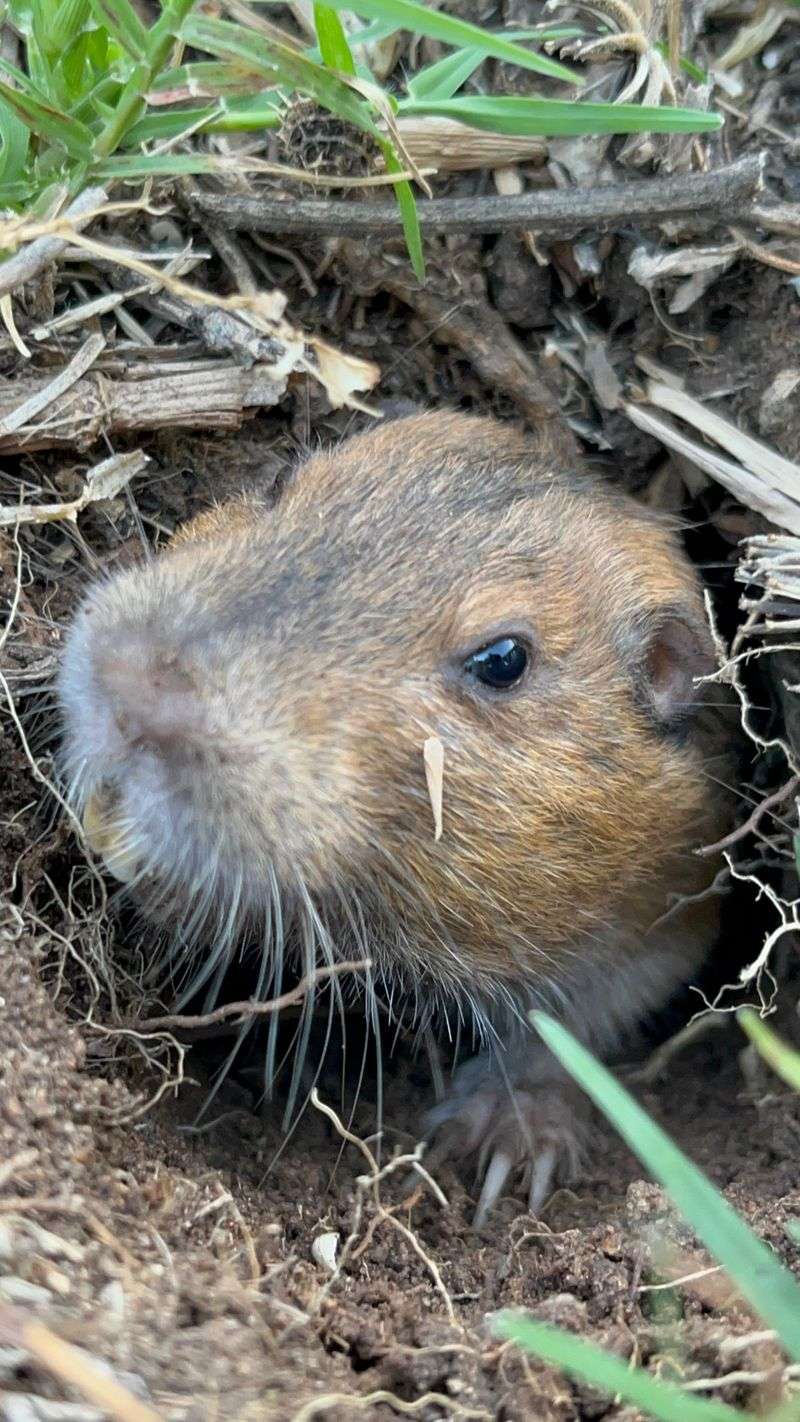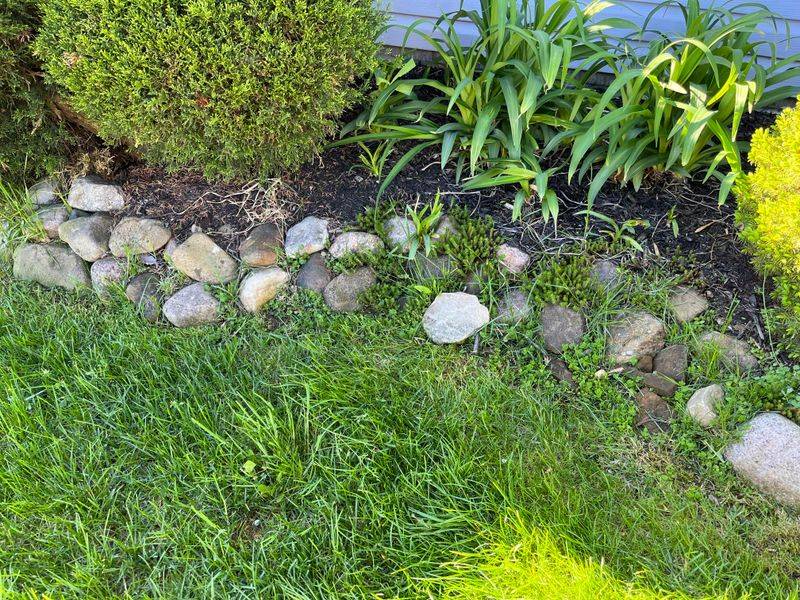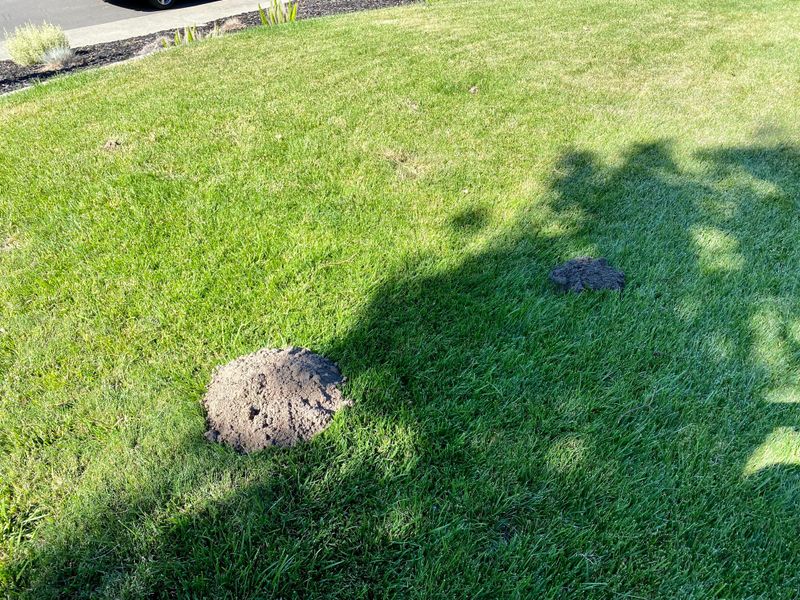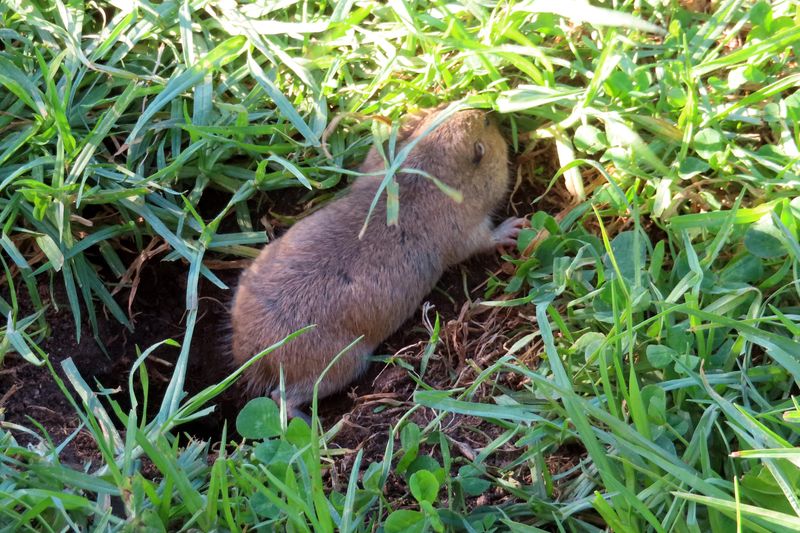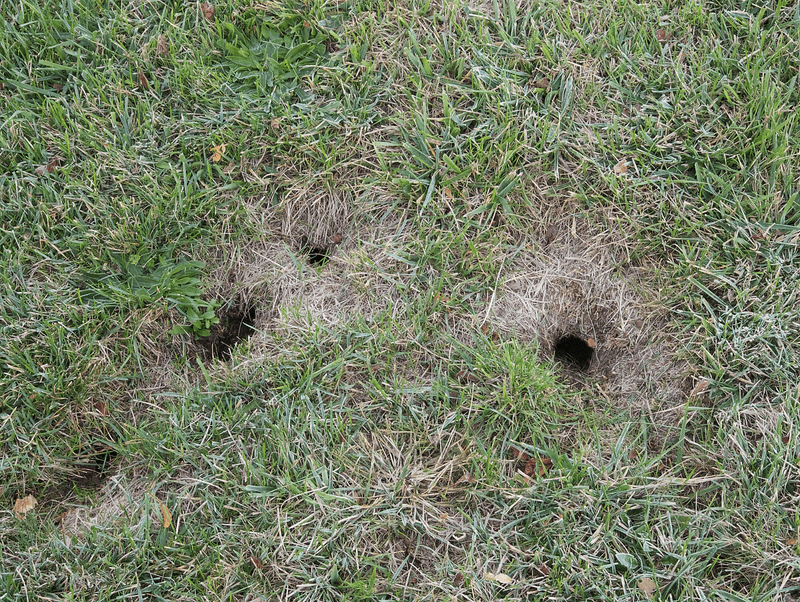Gophers can turn a thriving Illinois garden into a maze of tunnels and damaged roots seemingly overnight. Many gardeners across the Prairie State face this frustrating challenge, watching helplessly as their vegetables and flowers suffer from underground invaders.
Fortunately, you don’t need harsh chemicals to protect your garden from these persistent pests.
1. Plant Gopher-Repellent Bulbs And Flowers
Certain plants naturally discourage gophers from setting up shop in your garden beds. Daffodils contain toxic alkaloids that gophers instinctively avoid, making them excellent border plants around vegetable patches.
Castor bean plants emit a scent that repels these rodents, though you’ll want to handle them carefully since they’re poisonous to humans too. In my Illinois garden, I planted daffodil bulbs around my tomato beds last fall. By spring, the gophers had moved their tunneling activity to my neighbor’s yard instead.
Marigolds also work well when interplanted with vegetables. Space these repellent plants every few feet along garden edges for maximum effectiveness.
2. Install Underground Wire Mesh Barriers
Physical barriers stop gophers before they reach your precious plants. Hardware cloth with half-inch openings works best, installed at least two feet deep around garden beds. The mesh creates an impenetrable wall that forces gophers to tunnel elsewhere, protecting roots from damage.
When building my raised beds last spring, I lined the bottoms and sides with galvanized wire mesh. The installation took an extra afternoon, but I haven’t seen a single gopher mound inside those beds since. My carrots and potatoes grew undisturbed all season.
Extend the mesh six inches above soil level to prevent gophers from climbing over the barrier.
3. Use Humane Box Traps
Box traps offer a chemical-free way to remove individual gophers from your property. These devices capture the animal alive, allowing you to relocate it far from your garden. Position traps near fresh mounds, and check them twice daily to minimize stress on captured animals.
Last summer, I caught three gophers using a simple wooden box trap baited with apple slices. I released them in a wooded area about five miles from my house, following local wildlife regulations. Within two weeks, the tunneling in my herb garden had stopped completely.
Always wear gloves when handling traps to avoid leaving your scent behind.
4. Encourage Natural Predators
Owls, hawks, and snakes naturally hunt gophers, providing free pest control when you create habitat for them. Installing owl boxes on tall posts attracts barn owls, which can consume multiple rodents nightly. Keeping brush piles and rock gardens provides shelter for beneficial snakes like garter snakes and bull snakes.
After putting up two owl boxes near my garden last year, I noticed a family of barn owls moved in by autumn. The gopher population dropped noticeably over winter. My neighbor spotted a bull snake sunning itself near my compost pile, which explained the lack of fresh tunnels.
Avoid using any rodenticides that could poison these helpful predators.
5. Maintain Clean Garden Edges
Gophers prefer areas with cover where they feel protected from predators. Keeping grass mowed short around garden perimeters and removing tall weeds eliminates hiding spots that attract these rodents. Clear, open spaces make gophers feel vulnerable, encouraging them to search for safer territories.
I noticed gophers always appeared when my lawn got shaggy and weeds overtook the fence line. Once I started mowing weekly and pulling weeds regularly, the problem decreased dramatically. The exposed ground apparently made them nervous about venturing into my vegetable rows.
Trim back overgrown shrubs and remove debris piles that provide shelter near gardens.
6. Deploy Vibration Stakes
Battery-operated or solar-powered stakes emit vibrations and sounds that irritate gophers, making your garden unpleasant for them. These devices pulse every few seconds, creating disturbances that mimic danger signals underground.
Most units cover a radius of about seventy-five feet, so you’ll need multiple stakes for larger properties. I was skeptical about these gadgets until my sister-in-law installed four around her Illinois flower beds. Within three weeks, the gopher mounds disappeared from her yard.
I bought six stakes for my own garden and positioned them throughout my vegetable patches. Replace batteries regularly or clean solar panels to maintain effectiveness throughout the growing season.
7. Apply Organic Repellent Sprays
Strong-smelling substances repel gophers without harming your plants or soil. Peppermint oil mixed with water creates an effective spray for tunnel openings and garden borders.
Garlic-based solutions work similarly, overwhelming the sensitive noses of these underground dwellers and sending them searching for less pungent territory. Every two weeks during summer, I spray a homemade mixture of crushed garlic, cayenne pepper, and water around my garden perimeter.
The smell is pretty intense right after application, but it fades for humans while apparently remaining offensive to gophers. My bean plants stayed untouched all season. Reapply after heavy rains since water washes away the scent barrier.
8. Rotate Your Planting Locations
Moving crops to different beds each season confuses gophers that have learned where tasty roots grow. This traditional farming practice disrupts their feeding patterns and tunnel systems, forcing them to constantly search for food sources.
Rotating plantings also improves soil health, creating a double benefit for your Illinois garden. For the past three years, I’ve moved my potato patch to a different corner of my yard annually. Gophers seem to check the old location first, then give up when they find only lettuce or herbs instead.
This simple strategy has saved countless tubers from becoming gopher snacks. Keep records of what you plant where to plan effective rotations year after year.
9. Disturb Tunnels Regularly
Gophers invest significant energy building tunnel networks, so repeatedly destroying their work discourages them from staying. Using a shovel or garden hose to collapse tunnels and flood chambers makes your property less attractive.
The constant need to rebuild exhausts these animals, prompting them to relocate to easier territories. Whenever I spot a fresh mound, I immediately stomp down the tunnel and flood it with my garden hose. This routine takes maybe ten minutes weekly, but it’s remarkably effective.
Last month, a gopher finally gave up after I collapsed the same tunnel system four times in two weeks. Check for new mounds every few days during peak gopher season in spring and fall.



